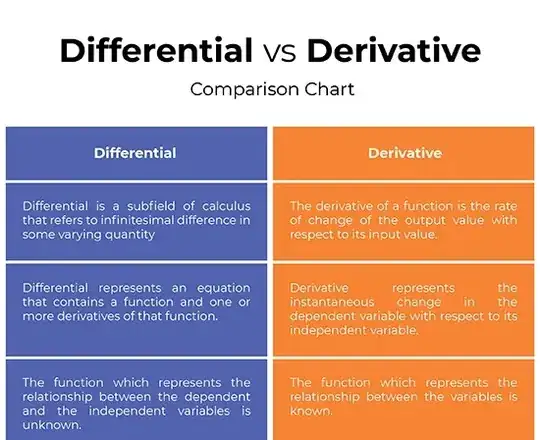For question about the differential of a map from an open set of a vector space to a vector space.
In mathematics, differential refers to infinitesimal differences or to the derivatives of functions. The term is used in various branches of mathematics such as calculus, differential geometry, algebraic geometry and algebraic topology.
Differential is one of the fundamentals divisions of calculus, along with integral calculus. It is a sub-field of calculus that deals with infinitesimal change in some varying quantity. The world we live in is full of interrelated quantities that change periodically.
For example, the area of a circular body which changes as the radius changes or a projectile which changes with the velocity. These changing entities, in mathematical terms, are called as variables and the rate of change of one variable with respect to another is a derivative. And the equation which represents the relationship between these variables is called a differential equation.
Differential equations are equations that contain unknown functions and some of their derivatives.
Difference between differential and derivative:
In mathematics, the rate of change of one variable with respect to another variable is called a derivative and the equations which express relationship between these variables and their derivatives are called differential equations. In a nutshell, differential equations involve derivatives which in fact specify how a quantity changes with respect to another. By solving a differential equation, you get a formula for the quantity that doesn’t contain derivatives. The method of computing a derivative is called differentiation. In simple terms, the derivative of a function is the rate of change of the output value with respect to its input value, whereas differential is the actual change of function.
References:
